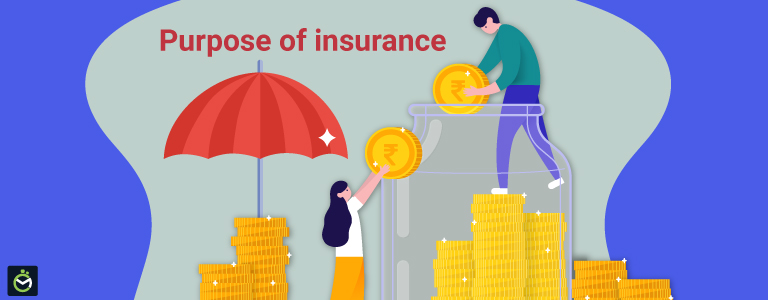All About Pacific Prime
All About Pacific Prime
Blog Article
Pacific Prime Fundamentals Explained
Table of ContentsGetting The Pacific Prime To WorkThe Ultimate Guide To Pacific PrimeSome Known Details About Pacific Prime The Of Pacific PrimePacific Prime Fundamentals Explained

This is since the information were collected for a duration of strong financial efficiency. Of the estimated 42 million people that were uninsured, just about concerning 420,000 (regarding 1 percent) were under 65 years old, the age at which most Americans become qualified for Medicare; 32 million were grownups between ages 18 and 65, around 19 percent of all grownups in this age group; and 10 million were kids under 18 years old, concerning 13.9 percent of all youngsters (Mills, 2000).
These price quotes of the number of individuals uninsured are generated from the annual March Supplement to the Present Populace Study (CPS), performed by the Demographics Bureau. Unless otherwise noted, national quotes of individuals without health and wellness insurance coverage and percentages of the population with different type of coverage are based upon the CPS, the most widely utilized source of quotes of insurance policy protection and uninsurance prices.
Pacific Prime for Dummies

Still, the CPS is specifically valuable due to the fact that it creates annual estimates relatively rapidly, reporting the previous year's insurance protection approximates each September, and because it is the basis for a regular set of estimates for greater than two decades, permitting for evaluation of patterns in protection in time. For these reasons, in addition to the comprehensive use the CPS in various other research studies of insurance policy coverage that exist in this record, we depend on CPS quotes, with constraints noted.

The price quote of the number of without insurance people increases when a population's insurance standing is tracked for several years. Over a three-year period starting early in 1993, 72 million people, 29 percent of the U.S. https://www.pubpub.org/user/freddy-smith-2. population, were without insurance coverage for at the very least one month. Within a solitary year (1994 ), 53 million people experienced at least a month without insurance coverage (Bennefield, 1998a)
Six out of every ten without insurance adults are themselves employed. Working does boost the probability that one and one's family participants will have insurance coverage, it is not an assurance. Even participants of households with two full-time wage earners have almost a one-in-ten possibility of being without insurance (9.1 percent uninsured price) (Hoffman and Pohl, 2000).
What Does Pacific Prime Mean?
New immigrants make up a significant percentage of people without wellness insurance coverage. One evaluation has actually attributed a considerable section of the recent development in the dimension of the U.S. uninsured populace to immigrants who got here in the country in between 1994 and 1998 (Camarota and Edwards, 2000). Current immigrants (those who more info here involved the USA within the previous four years) do have a high price of being uninsured (46 percent), but they and their children account for simply 6 percent of those without insurance nationally (Holahan et al., 2001).
The connection in between wellness insurance and accessibility to care is well established, as recorded later on in this chapter. The connection in between wellness insurance and health and wellness results is neither direct nor simple, a comprehensive medical and health solutions research study literature links wellness insurance policy coverage to improved accessibility to care, much better quality, and improved individual and populace wellness condition.
Degrees of analysis for analyzing the impacts of uninsurance. This discussion of medical insurance coverage concentrates mainly on the U.S. populace under age 65 due to the fact that basically all Americans 65 and older have Medicare or various other public protection. Moreover, it focuses particularly on those with no medical insurance for any length of time.
What Does Pacific Prime Mean?
The issues encountered by the underinsured remain in some aspects similar to those dealt with by the without insurance, although they are normally much less serious. international health insurance. Uninsurance and underinsurance, nevertheless, involve definitely different policy issues, and the strategies for resolving them might vary. Throughout this research study and the five reports to follow, the main emphasis gets on individuals without any medical insurance and thus no assistance in spending for health care beyond what is available via charity and safeguard organizations
Health and wellness insurance is an effective variable influencing receipt of care due to the fact that both individuals and doctors react to the out-of-pocket cost of services - https://www.openlearning.com/u/freddysmith-sba6sp/. Wellness insurance policy, however, is neither necessary nor sufficient to access to clinical solutions. However, the independent and straight result of wellness insurance policy protection on accessibility to health and wellness solutions is well developed.
Others will get the healthcare they require even without wellness insurance coverage, by spending for it out of pocket or seeking it from suppliers who supply care totally free or at very subsidized rates. For still others, medical insurance alone does not guarantee receipt of treatment as a result of various other nonfinancial barriers, such as a lack of health and wellness treatment carriers in their neighborhood, restricted accessibility to transportation, illiteracy, or etymological and social distinctions.
How Pacific Prime can Save You Time, Stress, and Money.
Formal research study concerning without insurance populaces in the United States dates to the late 1920s and early 1930s when the Committee on the Expense of Healthcare generated a collection of records concerning financing physician office check outs and hospital stays. This issue became salient as the numbers of medically indigent climbed during the Great Anxiety.
Report this page